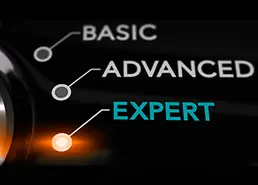Modular Licensing and Software Protection
With modular licensing models, software vendors lower the entry barrier to high-quality, complex products by offering tiered versions with varying levels of functionality. This flexible approach empowers users to adopt solutions that match their specific needs and budgets, while still enabling seamless upgrades as requirements evolve.
Users pay exclusively for the features they truly need, ensuring maximum value without unnecessary overhead. By developing tailored feature sets for specific market segments, vendors can unlock new revenue streams and expand their reach. This approach enables sustainable growth while maintaining a fair and transparent cost structure for customers.
The Solution at a Glance
Modular licensing can be easily implemented with CodeMeter. This webinar will explore two key aspects:
- How to integrate modular licensing into the software
- How to create modular licenses for end users
While both aspects are fundamentally independent, they influence one another − a connection we will highlight during the webinar.
Package-Based vs. Feature-Based Licensing – or Both?
In principle, there are two strategies: package-based or feature-based licensing.
In the feature-based approach, the vendor assigns a distinct license to each individual feature, enabling a clean, modular implementation within the software itself. Developers identify the relevant code blocks for each feature and protect them using the corresponding Product Code associated with the license. This separation of concerns allows product management and sales teams to create and manage commercial packages independent of the development process. New packages can be assembled or adjusted at any time without requiring changes to the software. However, repackaging during software updates can introduce complexity, particularly when features need to be redistributed across different configurations.
In the package-based approach, the vendor defines a dedicated license for each available package, streamlining the licensing process by ensuring that each user − or internal demo environment − receives a single, consolidated license. The mapping between packages and features is handled directly within the software: Developers identify the code segments tied to specific features and protect them using all relevant Product Codes associated with the packages that include those features. This method enables clean, efficient license management and allows for repackaging flexibility. However, any changes to the package structure post-deployment require corresponding updates in the software code.
Modular Licensing and Software Protection | |||
|---|---|---|---|
| 20 May | 7.00 pm CEST | English | Register |
| 21 May | 9.00 am CEST | English | Register |
| 21 May | 2.00 pm CEST | German | Register |
| I can't attend the live event, but send me the recording when available. | Request | ||
| Check your Time Zone | |||
Agenda:
- Overview of Modular Licensing
- Comparison of Strategies
- Feature-Based Approach
- Package-Based Approach
- Integration with AxProtector
- License List == Feature
- License Entry == Sales Item
- Handling of Inactive Features
- API Calls
- Exception Handling
- Example Licenses in CodeMeter License Central
- Hybrid Approaches (e.g., NFR Licenses)
- Maximum Security: One Key per Feature
If you want to protect your software, implement flexible licensing, and streamline your software customization, register now and take this opportunity to optimize your licensing strategy with proven methods from industry experts!








